In combination with electric or other types of innovative propulsion, aircraft that are capable of 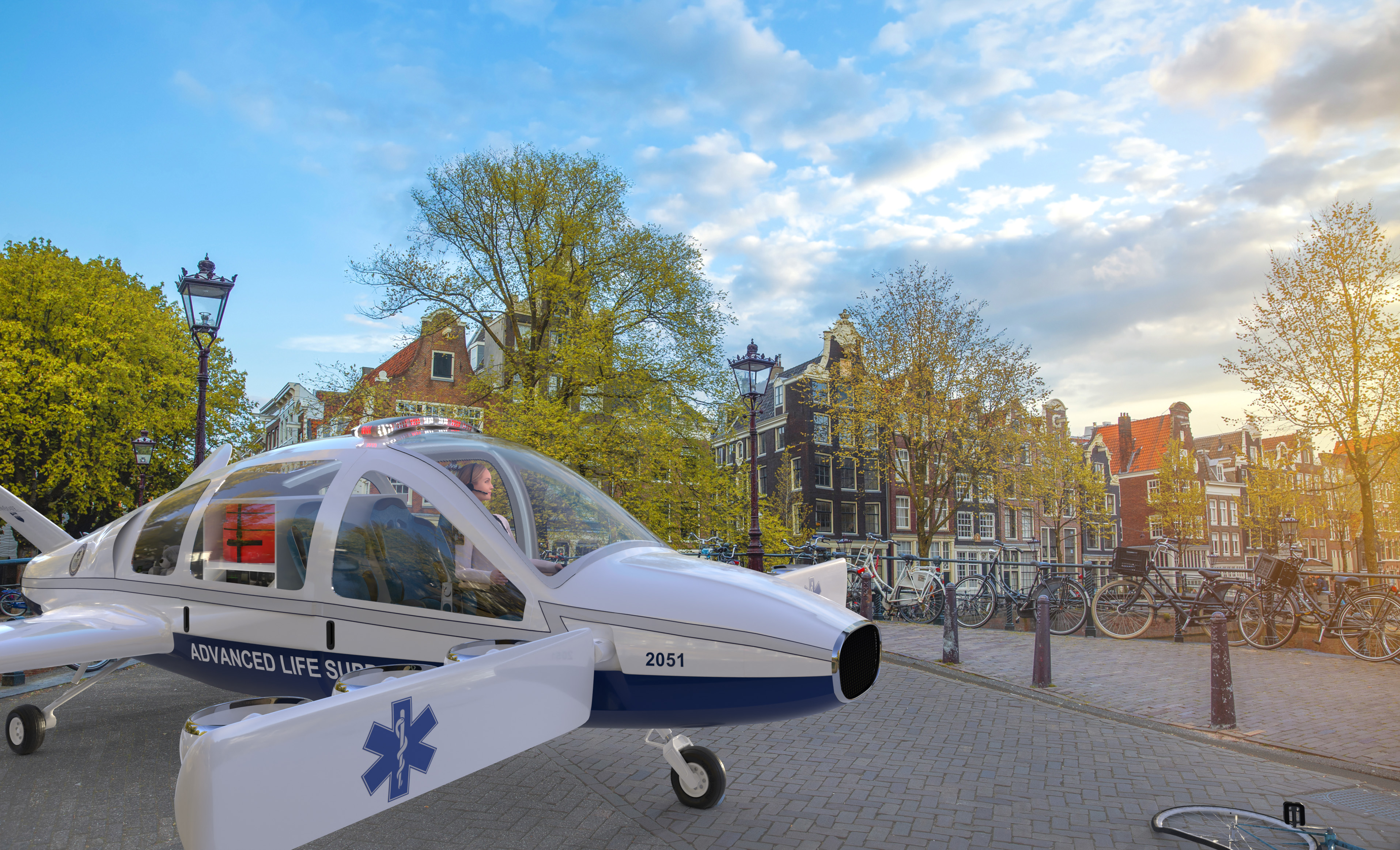 Vertical Take-off and Landing (VTOL) have the potential to reduce aviation’s environmental footprint in terms of emissions and noise. They are being proposed to meet several challenges that urban environments face, including providing care to sick or injured persons.
Vertical Take-off and Landing (VTOL) have the potential to reduce aviation’s environmental footprint in terms of emissions and noise. They are being proposed to meet several challenges that urban environments face, including providing care to sick or injured persons.
Traditionally, medical assistance by air had to rely on Emergency Medical Services by helicopters (HEMS) and aeroplanes (AEMS). This may soon be supplemented by VTOL aircraft, carrying out flights for medical missions in urban areas, referred to as VEMS.
In 2019, EASA asked citizens to see how they would rank possible medical services in order of usefulness, and the following was established:
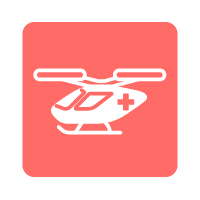 Transport of injured persons to hospital
Transport of injured persons to hospital
Air lifting of injured or sick citizens, instead of transport by ground ambulance, can reduce the transport time. It may also allow for less hazardous transport and avoid the occurrence of additional injuries.
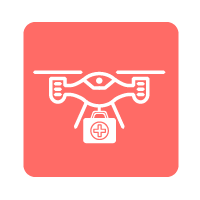 Delivery of medical supplies by VTOL and Unmanned Aircraft Systems (UAS)
Delivery of medical supplies by VTOL and Unmanned Aircraft Systems (UAS)
When medical supplies are needed, time is of the essence.
Medical transportation of equipment or organs could be performed approximately 73 percent faster by a UAS than by ambulance, taking the example of a trip in Berlin on a Thursday evening, during rush hour.
 Transport of emergency medical personnel
Transport of emergency medical personnel
Bringing a doctor, a paramedic, or a specialised nurse by air to the scene of an accident or to a very sick person allows for a quick first aid and optimisation of resources, even if the transport of the patient is eventually performed by ground ambulance.
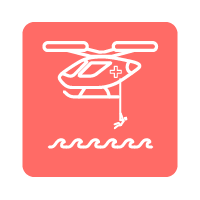 Disaster management using VTOL and UAS
Disaster management using VTOL and UAS
In case of natural disasters and other types of mass casualty incidents, VTOL aircraft could help bring personnel and equipment to the scene, especially if road access is compromised. They can also provide a supporting role, for example in Search & Rescue activities or in scene survey.
Medical help by air right where you need it
Conducting air rescue and air medical assistance with VTOL allows medical teams to carry out their missions in densely populated areas. EASA has proposed a design of vertiports where such aircraft can land. These vertiports are easier to integrate in city centres, making use of locations not only on top of high buildings, but also in other designated areas where assistance might become necessary.
- Take a look at our article on vertiports to see what requirements need to be fulfilled and what operational aspects would need to be considered.
Why VTOL for emergency medical services (EMS)?
There are five main reasons to look at VTOL to use in EMS:
 Quicker response time: VTOLs may help to cut the response time (from the moment a call for help is made to the time medical personnel arrive at the scene) if they can be dispatched from nearby hubs.
Quicker response time: VTOLs may help to cut the response time (from the moment a call for help is made to the time medical personnel arrive at the scene) if they can be dispatched from nearby hubs.
 Noise: Studies underline that VTOL have the potential to create less noise.
Noise: Studies underline that VTOL have the potential to create less noise.
 Sustainability: An electric aircraft may result in lower emissions.
Sustainability: An electric aircraft may result in lower emissions.

Automation: Handling of VTOL could be much easier through automation. They are not planned to initially operate as autonomous aircraft; instead pilots will be in command assisted by advanced flight control systems.

Affordability: Although VTOL will be sophisticated and safe aircrafts, they are expected to be mechanically less complex than aircrafts traditionally used in EMS. The purchase of such aircraft and the maintenance that ensure the continuous safe operation may therefore be more affordable.
Challenges ahead for emergency medical services with VTOL
Making use of VTOL for air taxis is one thing, using them for emergency medical services means that some additional issues need to be addressed to make this feasible. Some of the challenges are:
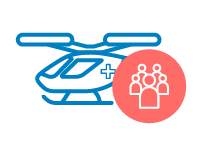 Crew or ‘Payload’
Crew or ‘Payload’
Unlike an air taxi which will be operated by one pilot, for an EMS operation, an additional crew member onboard is needed. The crew must consist of:
- Pilot, who has also some medical knowledge
- Doctor, paramedic, or specialised nurse who in turns doubles up as technical crew member
This means VTOL may have to carry more weight and be bigger, when compared to a 1-passenger air taxis, to also transport the medical equipment.
 Performance
Performance
VTOL will be departing from a VEMS operating base and must have sufficient range to perform their missions. A study in the context of the German EMS system (REF) has proposed 150 km as a useful minimum range.
Moreover, VTOL will need to have enough energy onboard for multiple take-offs and landing, typically the most power intensive phases of the flight.
 Availability of aircraft
Availability of aircraft
To maximise the usefulness of the aircraft, it should be able to fly:
- 24/7, day and night, and need to have adequate night vision equipment. In all weather conditions such as rain, snow, gusts, etc.
- Land and take-off from unknown/unsurveyed sites, including confined areas, considering the aircraft performance, size, terrain and obstacles.
EASA and the European Commission at the forefront
Europe is leading the way worldwide in the field of creating the regulatory framework to ensure VTOL can safely perform the foreseen missions. EASA and the European Commission have been the first to introduce technical requirements and operational rules for manufacturers, operators, pilots and infrastructure designers to enable this vision.
requirements and operational rules for manufacturers, operators, pilots and infrastructure designers to enable this vision.
Setting rules will enable the manufacturers and industry to invest in this new technology to bring benefits to the citizens and patients.
If you want to know more about what has been done, take a look on EASA Pro where we covered this in a press release (English only).
Stay informed and up to date – follow EASA Light
EASA will share all the latest information on VTOLs, vertiports and developments relevant for citizens and passengers. Take a look at our articles on VTOLs, drones and other areas on EASA Light.
Create an account and follow us on EASA Light to stay up to date.
